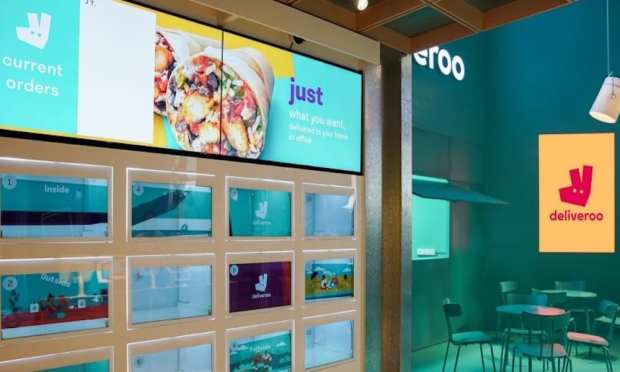Deliveroo Serves Up Fully Automated Dining In Singapore

Food delivery services opening up kitchens of their own is not exactly a shock to the system in 2019. Industry doomsayers have long been pointing out that restaurants handing over their customers to aggregator services that handled delivery was a short-term gain with a very long-term cost.
The inevitable path of the market, industry watchers noted, was that those portals with millions of customers to call their own along with in-depth knowledge of customers’ eating habits would eventually open kitchens and restaurants and start competing directly with the clients they serve.
It seemed like an unlikely outcome a few years ago, but today UberEats, DoorDash and Deliveroo all offer some variation on a virtual kitchen offering — and many believe 2019 is going to be the year that trend really explodes.
And Deliveroo wants to get ahead of the trend — which means it is taking the virtual kitchen concept and expanding it into a dine-in eating service. Deliveroo launched its first virtual kitchen location in 2017 in Singapore’s Katong district, followed by a second last last year. Called Editions, it builds on the concept of delivery-only kitchens to add a fully-automated dining experience for consumers.
Siddharth Shanker, general manager, Deliveroo Singapore noted that Editions is not, as it is often reported, an attempt to compete with the firm’s restaurant partners, but to help them — by offering them a space to prepare foods for customers without straining their brick-and-mortar resources.
“It also offers restaurant partners new revenue streams with access to data with the opportunity to reach wider customer bases in areas, that they would not have been able to with their physical brick-and-mortar restaurants,” Shanker told PYMNTS.
But its latest and third launch, he noted, is a much more ambitious offering called Deliveroo Food Market. Apart from a virtual location to prepare food, the market is also designed as an automated community center where consumers can sit down and eat.
As of its launch, the Food Market claims seven restaurants on its premises — with Japanese, Greek, American, Korean and Indian foods all represented — as well as an espresso bar for consumers looking for a caffeine injection. All orders are made in self-service kiosks and picked up from automated digital cubbies. The shops are manned in the back — someone actually has to prepare all that food in the kitchen — but from a consumer perspective the entire experience is self-service automated.
“Singapore is an ideal market for this expansion of our offerings,” Shankar said, “because of how powerfully the digitally mediated delivery market has taken off there.”
An internal study, he noted, showed that more than half of all Singaporean customers are using dining apps more today than they were even two years ago, and nearly two-thirds report their spending on said apps has increased. It is a market that was hungry, pardon the pun, for expanding dining options, particularly those that are convenient and easily accessible. It is a concept that is getting off the ground in Singapore now, he said, but it could easily be one the U.K.-based firm begins to export to its global customer base if it proves to be a success.
Whether that global customer base will be in the U.S. and Europe, however, remains to be seen. Automated dining concepts, though comparably rare in the West, have been gaining increasing traction of late in Asian markets. Singapore-based online marketplace Honestbee launched a 60,000 square-foot space that houses a grocery and dining retail store in 2018, and Alibaba has its Hema stores and its similarly automated Wu Fang Zhai stores.
The latest Deliveroo location is very small in comparison — at 463 square feet it is about the size of a hotel room. But, Shanker noted, in that relatively small space, the Food Market is packing a lot of punch.
And it brings a lot of potential to expand how Deliveroo does business in Singapore and around the world going forward.
